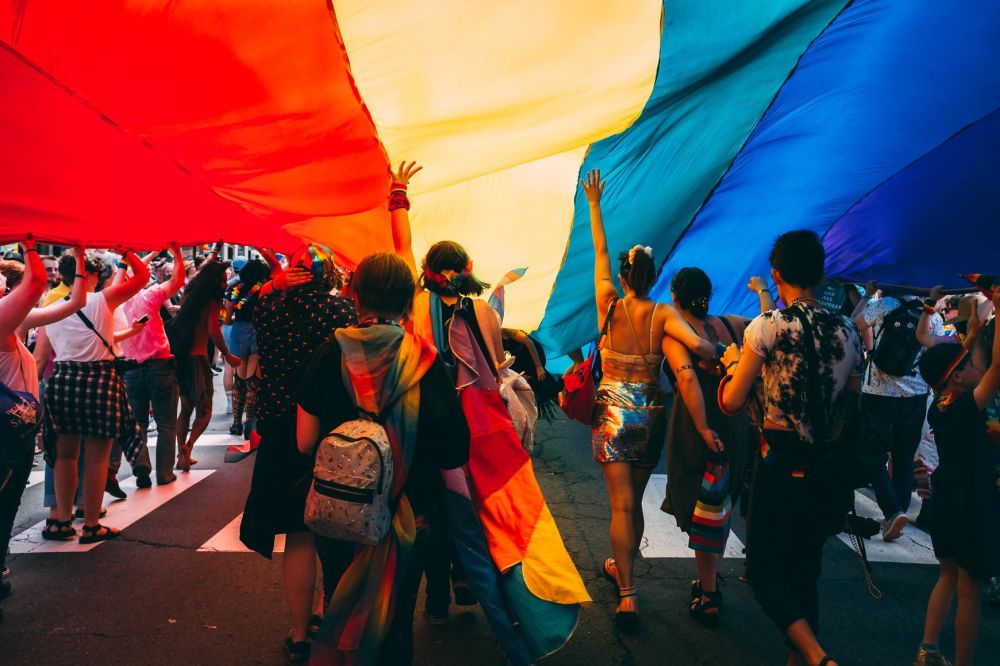It’s officially June, which means it’s also Pride month, a time dedicated to celebrating the LGBTQ+ communities all over the world. We’re already dusting off our rainbow flags!
Pride is usually celebrated globally with lots of parades, marches and parties in the evening. It’s a month where everyone comes together and celebrates love and acceptance, but also friendship. It’s also a time of refection, where we look back in history and see the achievements and progress LGBTQ+ movements have made. Ultimately, it’s all about being proud of who you are, no matter who you love.
So, why is Pride in June? This was the month of the Stonewall Riots in 1969, the raid and protests that changed gay rights for many people in America, and across the world.
However, inequality and injustice still exist today, not just in the UK, but throughout societies worldwide, meaning there’s much work to be done. Pride calls for people to remember how hurtful and damaging homophobia has been historically, and remains to be today. It’s about awareness, teaching tolerance, education in Pride history and moving forwards with equality.
What happened at the Stonewall Riots?
On a hot summer’s night in New York City, 28th June, 1969, the New York City police raided the Stonewall Inn, a gay club in Greenwich Village. The raid resulted in bar staff and residents of the neighbourhood rioting on Christopher Street.
There were many liberation activists and leaders during the events that followed, but two pioneered specifically, including Marsha P. Johnson, who was a black, trans, bisexual woman that led the uprising and movement over a period of six days with clashes and protests. Then there’s Brenda Howard, a pioneering bisexual activist, also known as the ‘Mother of Pride’ after she created Pride week, in the year that followed the riots. Without her, Pride as we know it wouldn’t exist.
Their message was clear – the people wanted the establishment of places where the LGBTQ+ community could freely go to, where they could be open about their sexuality, without having the fear of being arrested or harassed.
From the Stonewall impact and subsequent catalyst for change, 28th June is actually a sub-holiday during Pride month, since it marks the first Pride march that was held in New York City in 1970. Other communities also celebrate Pride day on different dates, throughout June.
The origins of the iconic rainbow flag
It was a gay politician, Harvey Milk, who asked a friend (a talented designer), Gilbert Baker, to design an all-encompassing symbol to take on San Francisco’s Pride march in 1978. The flag is still an essential part of Pride and we can’t imagine it without the universal symbol.
The Pride timeline and dates to know:
In 1946, The Netherlands Centre for Culture adopted a bit of random name to mask its purpose, but became the first LGBT organisation.
28th June, 1969, the date of the Stonewall Riots.
28th June, 1970, the first official Pride parade organised by Brenda Howard and a committee she put together.
25th June, 1978, the rainbow flag flies high at the San Francisco Gay Freedom Day Parade.
1st April, 2001, the then mayor of Amsterdam married four same-sex couples. This meant that the Netherlands became the first country in the world to legalise same sex-marriage. Shortly after, countries began to legalise same-sex marriage, although you may be surprised to know it’s still illegal in many other countries. For example, Taiwan is the only country in Asia to accept same-sex marriage, while South Africa is the only African country where it’s legal to do so.
As campaigns and rallies continue to recognise and support all communities, let’s celebrate Pride in style, proudly embracing love and equality for all.
